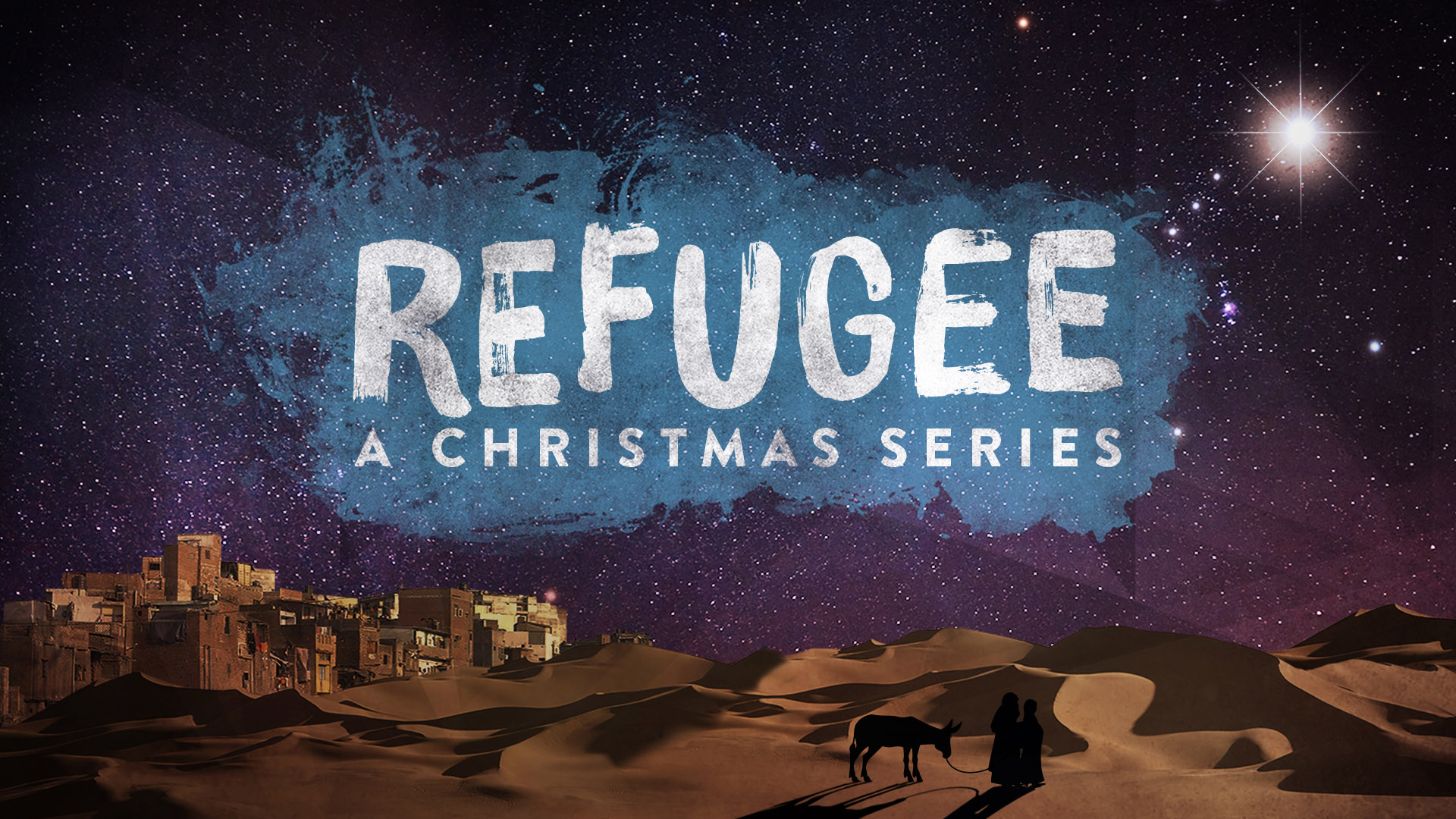Refugee
Last Sunday we started our ‘Refugee’ Christmas series. We decided on this theme long before the refugee crisis in Syria became the political football it is today. Every Christmas, teaching pastors face the challenge of helping people appreciate the significance of a Christmas story they’ve heard so many times before. We typically try and tackle Christmas from a different angle. Months ago now, I noticed the theme of displacement in the Christmas story:
- Mary’s journey to Elizabeth
- Joseph and Mary’s hike to Bethlehem
- Mary, Joseph and Jesus fleeing to Egypt
- The wise men being warned not to return to Herod
I took this idea to our teaching team and after a considerable amount of discussion and reflection we arrived at the refugee them. It’s funny to think how a conclusion reached in a mini-bus on the way home from a creative site trip with our executive team could prove to be so prophetic and controversial!
Each of the aforementioned Christmas stories has the idea of both unforeseen and uncomfortable movement, movement that, for the most part, is caused by external factors beyond their direct control. The characters involved in the Christmas story are displaced and such displacement ties them into the story of their ancestors. It is into this displaced sub-plot that the Christmas story greets us. Behind the mystery of the angels, shepherds and wise men is a refugee reality.
So that’s the idea we are unpacking through this series. We’re excited to show how the infancy story of Jesus is rooted in a refugee reality that invites everyone who feels displaced – whether socially, economically, politically or spiritually – to ‘come home.’ The Eternal Son made a home a long way from home and consequently outsiders become insiders and the guilty find forgiveness.
Unfortunately, or should I say, “By God’s providence,” the series has taken a more local, regional, national and global twist. Rather than speak on matters of Christian responsibility we are having to tackle themes like national security. I shared with our executive team just this week that in the throws of a five-year vision unveiling I would have liked a little easier ride for this series!
This week we’ve been bombarded with questions. Most of these questions have been great in terms of both attitude and intent.
Most. Not all. Some are holding Brad and I responsible for the first mosque that will be built in Holland. Others hold us responsible for the coming rise of Islam in West Michigan. To think, all we wanted to do was tell alienated people that both their Heavenly Father and the local church can’t wait to welcome them home!
What I want to do here is make public the answers to some questions Brad and I have shared this week. I’m doing this because our series, while tackling the refugee reality deeply rooted in the Christmas story, doesn’t tackle a number of the themes being discussed in Washington, on our TV screens, around our kitchen tables, in our bible study classes, small groups, coffee shops and on our school and college campuses. The series has triggered a number of assumptions, assertions, and questions for which Christians are seeking Biblical guidance. This week, quite a number have turned to Brad and I. As we reach the end of a week, and before message #2 in our series this Sunday, I thought it’d be good to open a few of those questions up.
Be warned. We aren’t politicians or social anthropologists. We just love the Bible. So with every question we’ve had we’ve just gone to the Bible in the hopes that it offers folks a framework upon which to formulate a considered response. Brad and I know that there are no easy solutions to what we see happening in our world. There is no quick fix to this refugee crisis.
There does however, need to be a biblically informed response to every issue connected to it. It’s a tall task this, done with some degree of trepidation.
I am going to answer two questions this time and a few more next time. Please remember that our series simply tackles how God wants us to respond to the alien, stranger, foreigner and refugee in our midst. We aren’t tackling all the issues people have questioned us on. Nonetheless, we hope this helps…
Question: What does God say the Christian to do with the Alien (Refugee, illegal Immigrant) who wished to kill your neighbor?
Answer: I don’t think the response to the alien differs from what God calls us to do to a national who wishes to kill our neighbor. We do what we need to do to stop it from happening. Love never ignores the evil and harm being done to another. Love intervenes and even suffers for others – that is the example of Jesus.
Practically, the first parameter is always to work within the confines of the law. We use the law to change any law that allows anyone an opportunity to commit harm. The two major issues implicated in the ‘refugee’ debate are immigration controls and, because of the events of California, gun control (again). We also involve law enforcement. Finally, we follow the advice readily available from local law enforcement centers about what to do in the midst of such an attack.
We think it important to note that Jesus was not for pacifism (most people read Matthew 5:38-41 incorrectly because they don’t understand the cultural context in this passage and derive a false understanding of what Jesus is teaching), but for non-violence, which is different. Non-violence is seeking a solution to address a situation head on without the use of violence. Jesus' method in Matthew 5 was to allow the perpetrator to see the evil they were committing and give that perpetrator a chance to do right (thus, the entire process was couched in love). So clearly, Jesus is not advocating that we do nothing in the midst of potential harm. And God’s desire is that however we respond, our response would ultimately bring more shalom to a situation and that our response would push out the darkness, chaos, and evil.
Question: You used an example of Egyptians that were part of the Exodus. I was not able to find any information about if these people brought their polytheism with them? Did Israel let them build temples and still worship the many gods that they did while they were in Egypt?
Answer: It is important to ask, “What exactly was the doctrinal content of the people who left Egypt? How developed was Israelite faith?”
The question imports the developed religious belief system of Judaism into the formative years. Doing this allows us to ask the wrong question and look the wrong way for a solution. Let’s put it more simply. Let’s take the New Testament and the ministry of Jesus as an example. We are told that people had faith in Jesus and he healed them. Seems simple enough until we ask questions about the doctrinal content of that faith. Clearly, it wasn’t a faith in the crucified, buried, risen and ascended Eternal Son, was it? Now for us reading the story it makes no difference but the fact is, Jesus hadn’t died at that point. So for the people standing in front of Jesus it made a difference. What was the content of their faith? The developing Jesus story seems to indicate that the understandable lack of definition allowed more people to have some sort of ‘faith’ in Jesus initially (so in the formative years) only to fall away as the content of that faith was more defined. A great example of this is the dialog described in John 6. Look at verses 41 and 52 before noting the implications of verse 66 for our question:
From this time many of his disciples turned back and no longer followed him.
As Jesus defined the faith more fully early adopters fell away.
Here's the point: in the formative years of religious development there is far more gray space that allows lots of ideas to breed. It is only when the faith gets formalized that the ’screw’ gets tightened. After leaving Egypt the screw gets tightened at Sinai (Exodus 18) and is further tightened as they travel. It’s in this context that we can also understand the incident with the golden calf (Exodus 32). The incident of the golden calf presupposes the presence of polytheistic attitudes that have not receded as the content of Judaism gets more defined. In fact, one could argue that they became stronger. What does Moses do? Tighten the screw still further. Clearly, polytheistic attitudes were present.
The further you get into the Old Testament (which obviously encompasses a more developed Judaism), the directives we receive are very clear as to what God’s people are to do when in the presence of idols and false gods (that is, the Canaanite, Babylonian, Assyrian, Moabite, and Ammonite religious systems). The Bible says that God’s people aren’t to syncretize but thrive through active participation in society when we are the minority (Jer. 29:1ff) and through loving behavior based upon clear convictions when we are the majority. The Old Testament called God’s people to such faith that the nations (which includes those in our midst) would wonder and worship. Clearly, God didn’t want the Egyptian religious systems trumping His. But what God did want is for His people to reach out in love and then eventually challenge them on their beliefs. How else would people of other religious backgrounds come to a knowledge of God without ever experiencing the actions of His people? Love is the means to transformation.
The issues these two questions address are complex. I’ll post a few more q and a’s next time. If you want to add a question for Brad and I, please feel free to do that. We are just two guys who happen to think that a deep look at the Bible will provide us with the wisdom we need in tough times.


Leave a Comment